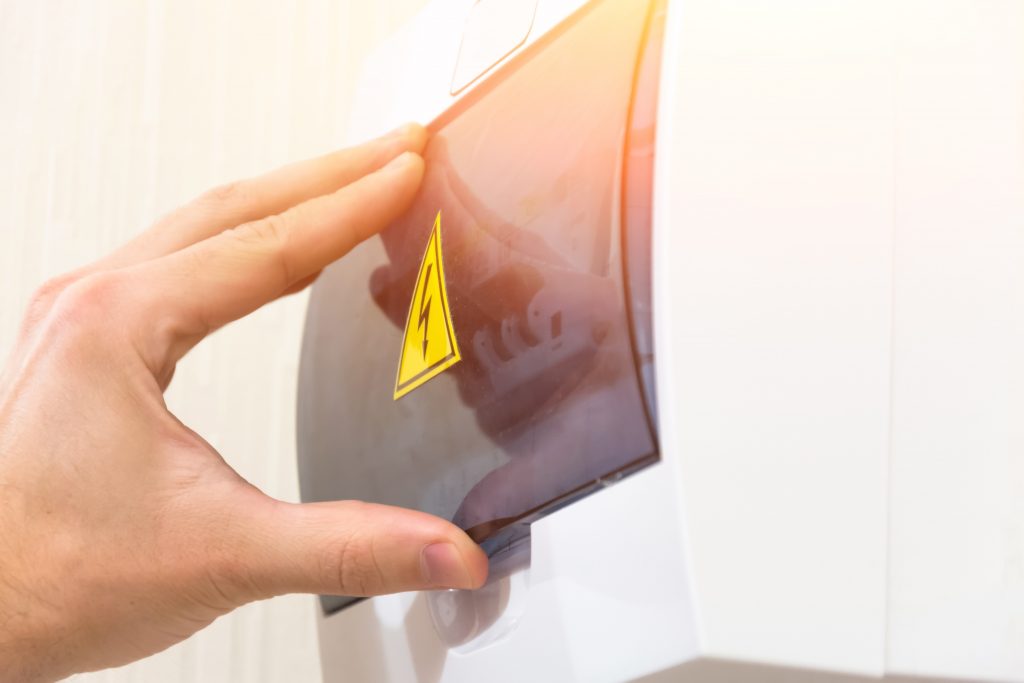Infrared heating has become an efficient and comfortable way to heat homes and businesses. Among the available options, in-ceiling infrared heating panels provide discreet, space-saving, and energy-efficient warmth. However, one critical factor that often gets overlooked is the voltage of the system.
The NexGen infrared ceiling heating systems operate at 24V (low voltage). A 24V infrared heating systems offer significant safety advantages. In this article, we’ll explore why 24V in-ceiling infrared heating is the safer and more reliable choice.
- Lower Voltage = Lower Risk of Electric Shock
Electricity at high voltages can be dangerous, especially when it comes into contact with water, faulty wiring, or improper installation.
- 24V infrared heating systems operate at a much lower voltage, significantly reducing the risk of electric shock.
- 240V systems, by contrast, carry much greater electrical risk, particularly if insulation or electrical connections are compromised.
This makes 24V systems ideal for homes, schools, hospitals, and commercial spaces where safety is a top priority.
- Improved Fire Safety
Electrical heating systems inherently carry some risk of overheating or electrical faults. However, low-voltage systems produce less electrical stress on components, reducing the likelihood of system failures that could lead to fires.
- 24V systems generate less heat in electrical connections, which decreases the risk of overheating.
- 240V systems can create more heat within wiring, potentially leading to thermal stress, especially if wiring is old or improperly installed.
For ceilings made of combustible materials (such as wooden joists or plasterboard), a 24V system is a much safer option as it lowers the risk of electrical fires.
- Safer in Wet or Damp Environments
Bathrooms, kitchens, and other moisture-prone areas require extra caution when installing electrical heating systems.
- 24V infrared heating systems are considered safer in wet areas because the lower voltage reduces the chance of electrical hazards caused by moisture.
- 240V systems pose a greater risk in damp environments, requiring extra precautions such as RCD (Residual Current Device) protection and insulation.
For installations in bathrooms, outdoor areas, or high-humidity spaces, a 24V infrared heating system is the preferred choice.
- Compliance with Electrical Safety Regulations
Many international safety standards and building codes recommend low-voltage heating solutions for enhanced safety.
- In the UK, low-voltage heating systems (24V) are often required in specific safety-sensitive applications.
- 240V systems must adhere to strict wiring and insulation regulations, increasing the complexity of installation and maintenance.
A 24V system is easier to install in compliance with regulations, reducing the risk of failed inspections or legal issues.
- Compatibility with Renewable Energy Systems
As homes and businesses transition to sustainable energy solutions, low-voltage heating is becoming an essential component of modern energy systems.
- 24V systems can integrate seamlessly with battery storage and solar PV systems, allowing for more efficient energy use.
- 240V systems require additional inverters and energy conversion, leading to greater energy losses and inefficiencies.
For those looking to decarbonise their heating and make use of off-grid power solutions, 24V infrared heating is the future-proof option.
- Reduced Strain on Electrical Circuits
In-ceiling heating systems require a stable electrical supply to function efficiently. High-voltage (240V) systems demand more power, potentially overloading circuits in older buildings.
- 24V systems distribute power more evenly, reducing strain on existing electrical infrastructure.
- 240V systems may require costly electrical upgrades, especially in homes with limited circuit capacity.
For buildings with older wiring or limited electrical capacity, a 24V system is the safer, more practical choice.
Conclusion: 24V Infrared Heating is the Smarter, Safer Choice
While both 24V and 240V infrared heating systems offer effective and efficient warmth, the lower voltage option is far superior in terms of safety.
✅ Lower risk of electric shock
✅ Improved fire safety
✅ Safer for wet and damp environments
✅ Easier compliance with safety regulations
✅ Better integration with renewable energy
✅ Reduced strain on electrical circuits
For homeowners, businesses, and installers prioritizing safety, efficiency, and long-term reliability, 24V in-ceiling infrared heating systems are the clear winner.


